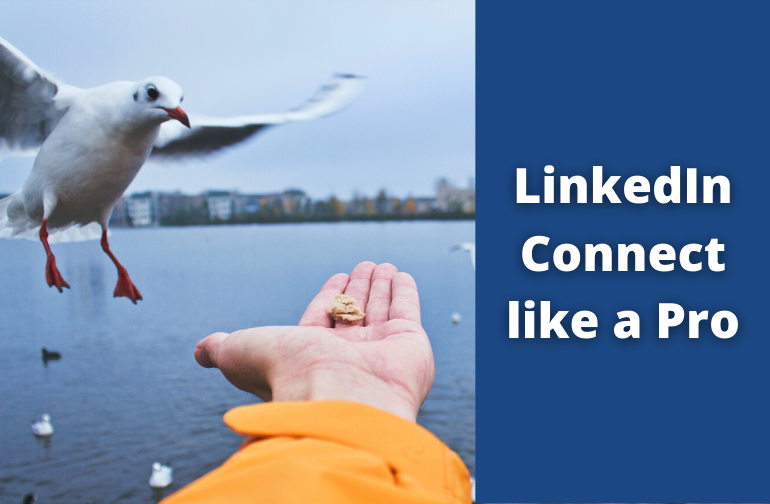The social media channel that outranks the rest when it comes to building connections and business networking, is LinkedIn.
As the largest professional online network with users numbering over 500 million in more than 200 countries, it suits both B2B and B2C marketing. Great content makes a LinkedIn page rock, but as you look for creative ways to add new trade partners to your network and help your business along, let’s explore how best to connect through your LinkedIn account.
What are your objectives?
LinkedIn is ideal for growing brand awareness and developing partnerships. Are you looking to make inroads into new markets, find new products to beef up your offering or new partners to collaborate with? Proactively growing your business in the COVID era comes with a whole set of new – and strictly online – challenges. Consider also that 80% of LinkedIn members want to connect with companies to enhance their decision-making.
Whatever your objective, connect with intention. Follow a process where you initiate appropriate contact, sustain valuable conversation, share relevant information, and nurture new relationships.

But first, put your profile on steroids
What do your connections see when they visit your profile page? It’s pointless claiming to be a great entrepreneur without the evidence to back it up! You want to give people reasons to follow your advice. Before we delve into direct messaging, follow this checklist to bolster your profile:
- As a decision-maker in your company, your personal profile is powerful, so refine and update it regularly: make it less about your biggest life accomplishment, more about your passions and the problems you solve.
- Complete the summary section of your profile – speak to the pain points you address if you wish to attract new partners.
- Customise your profile page URL.
- Think about what your profile pic says about you.
- Use your LinkedIn Blog page to keep your name front of mind among your networks (for free!) with fresh, relevant and useful content.
- Tag your connections on relevant posts or where you refer to them in blog articles.
- Observe the golden rule of LinkedIn marketing: add more value, do less selling!

On a technical note
If you have a plan, LinkedIn can help you connect broadly or target your networking. Identify who you want to reach out to and what you want to achieve, then get busy connecting.
- Direct message your own connections (for free).
- Share targeted messages to select audiences, identified by location and job title.
- Join LinkedIn groups that are relevant to your business. Listen, participate and advise. Use the opportunity to view member profiles and send direct messages to group members even without being connected, using your monthly quota of 15 free messages.
- Create your own group. Filter good prospects from the membership lists of groups you belong to, invite and incentivise them to join.
- Invest in a Premium account to access Open Profile or InMail in order to message people you’re not connected with.
Mind your LinkedIn Ps and Qs
The right way to connect and network starts as a survival skill and blossoms into a relationship building art form. As you navigate the rest of 2020 going into 2021, ensure that you use your LinkedIn account smartly – don’t burn bridges with intrusive, aggressive direct messaging, like Darren. There’s etiquette to follow here:
- Don’t be a Darren. His in-your-face, I’m-your-new-best-buddy, so-buy-my-product modus operandi doesn’t work. Instead, develop a marketing style that beguiles your contacts with useful information, valuable conversations, and relevant opportunities.
- Don’t spam your contacts. You may be a wonderful person and you may have something perfectly great to sell, but if the person you’re messaging isn’t looking for what you’re offering, then you’re spamming them!
- Use messaging templates for different stages of the conversation and for different audiences, but customise them for each person you message.
- Choose an ideal day and time to connect and engage your connections – practise good discipline like a pro with an organised, consistent routine.

What’s in it for me?
A clear call-to-action must quickly answer this important question. Remember: it’s not all about you. And don’t give the recipient too much to do. It’s great if they open your message and read it through, but to really hook them, it needs a pay-off that makes it worth their time.
Your success depends on how you guide or assist them, what you teach, instruct or inform on, how you add value to their business, what problems you solve, and how you can help them do their jobs better. Show them what your/their products could look like in their/your proposals and let the content do the talking.
Whatever you share should be attractive and easy to consume, simply presented with hyperlinks they can click to dig deeper – these can direct them to visual content, videos or thought leadership articles.
Messaging templates
Create templates to match the purpose of each contact. Try to keep the entire message to a maximum of 3 sentences, to the point, with language that translates well. Invite dialogue using an open-ended approach. We suggest templates in letter format:
- to introduce yourself
- to thank contacts for connecting with you
- to invite contacts onto your mailing list – tell them what they will receive, when they will receive it, and reciprocate by offering to join their mailing list
- to ask for advice, input or opinion
- to offer value before (or without) asking for anything in return

Resist the temptation to tell your entire contact list every wonderful thing about your brand or products – they may not all be potential partners or clients! Focus on the quality of the connection and the value of the engagement, and remember: LinkedIn is not the place for a sales pitch. Use it to help build new relationships that benefit your business, guided by the simple tenet that networking is not about who you know, but who you help.


Would you like to share your thoughts?
Your email address will not be published. Required fields are marked *